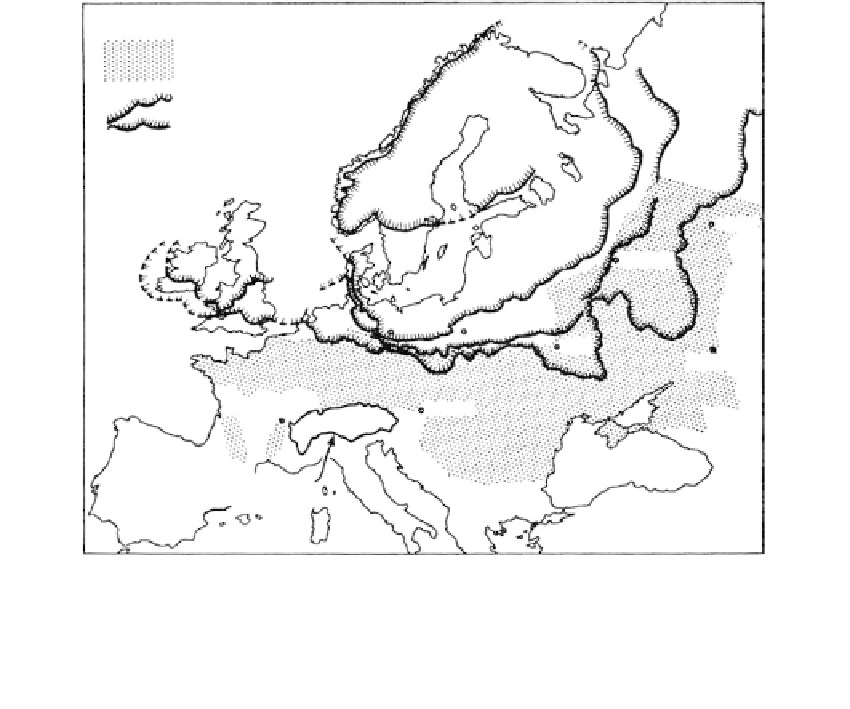Environmental Engineering Reference
In-Depth Information
4
3
2
Loess
Moraines of four
stages pleistocene
glaciation
1
3
2
4
4
Kazan
1
3
3
Moscow
3
2
2
Berlin
Warsaw
Kiev
Stalingrad
Lyon
Vienna
Limits of glaciation
in the Alps
FIGURE 7.69
Extent of the terminal moraines of four glacial advances in Europe and the deposition of loess. (From Gilluly, J.
et al.,
Principles of Geology
, W. H. Freeman and Co., San Francisco, 1959. © W. H. Freeman and Company.
Reprinted with permission.)
Characteristics
General
Regardless of location, loess is typically buff to yellow colored, lightly cemented (calcare-
ous or clay cements), very fine-grained, permeable (particularly in the vertical direction),
and devoid of stratification.
Formation
Wind-borne dust and silt are dropped down from the air and retained by the protective grip
of the grasses of the steppe. Each spring, the grass grows a little higher on any material col-
lected during the previous year, leaving behind a ramifying system of withered roots. Over
immense areas, many hundreds of feet accumulate, burying entire landscapes except for
higher peaks, which project above the loess blanket. Although loess is friable and porous,
the successive generations of roots, represented by narrow tubes partly occupied by calcium
carbonate, make it sufficiently coherent to stand in vertical walls (Holmes, 1964).
Structure
The loose arrangement of the silt particles with numerous voids and root-like channels can
easily be seen by photomicrograph observation of undisturbed loess specimens (Gibbs et
al., 1960). Petrographic methods determine that a majority of the grains of loess from
Kansas-Nebraska are coated with very fine films of montmorillonite clay, which is respon-
sible for the binder in the structure. Upon wetting, the clay bond is readily loosened, caus-
ing great loss of strength.


